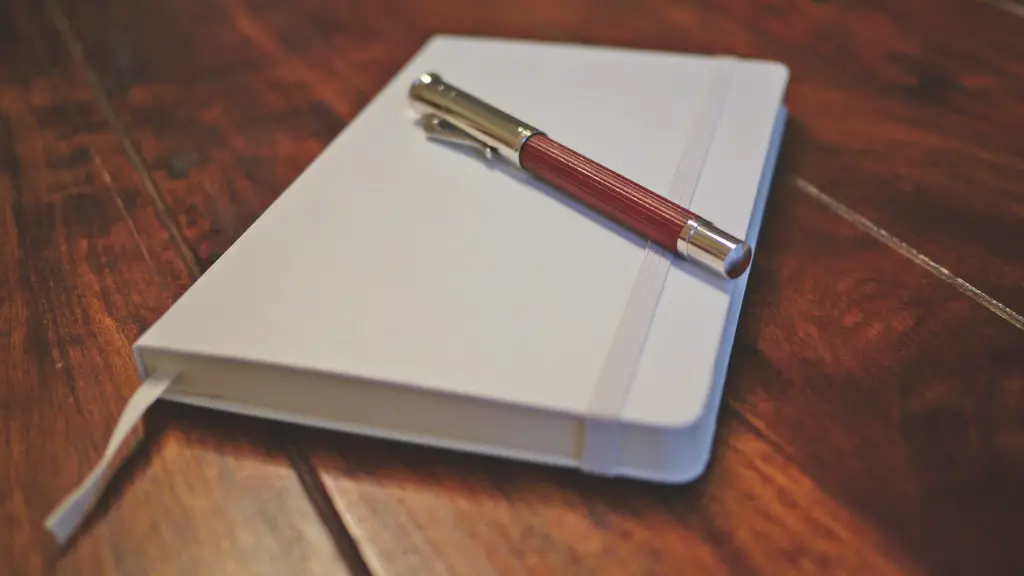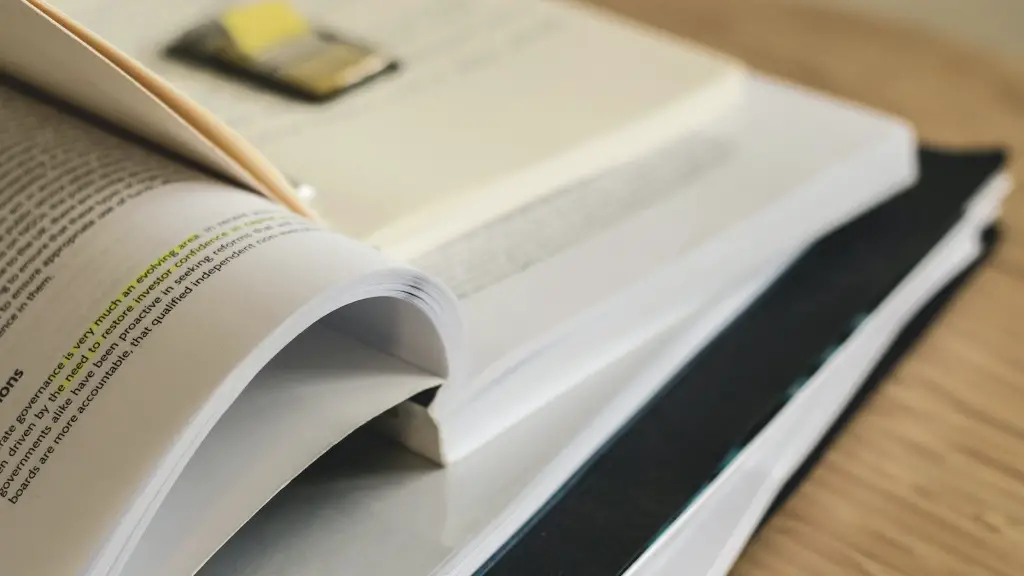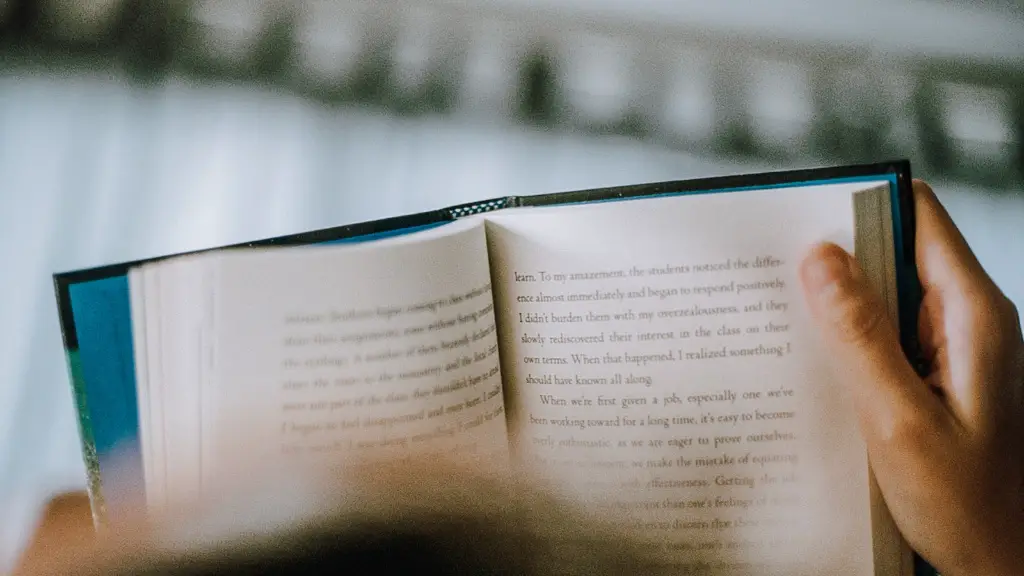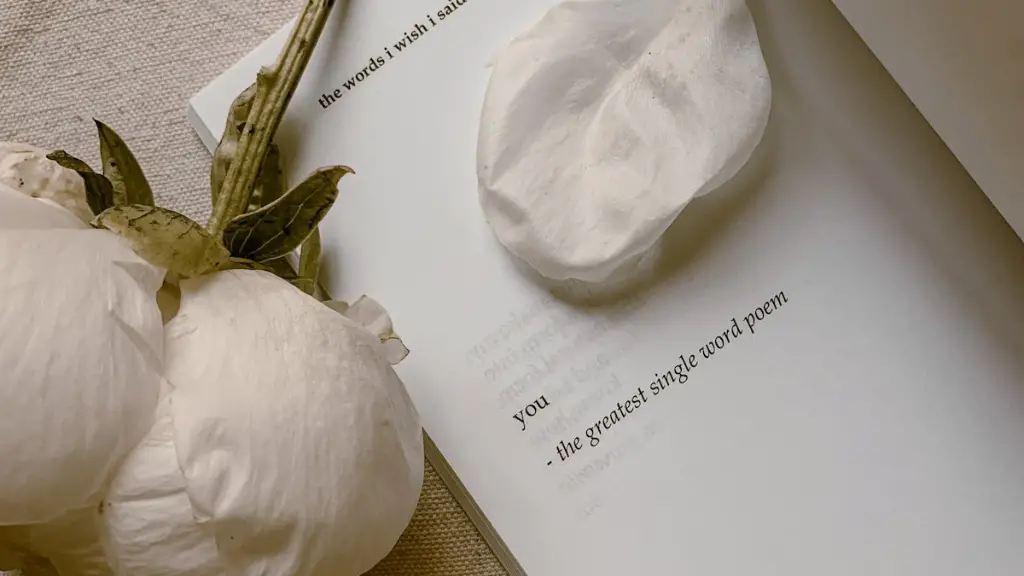Emily Dickinson is considered one of America’s greatest poets. She was a prolific writer, and her poems are known for their unusual literary devices. Dickinson was a master of using metaphors, similes, and personification to create vivid images in her poems. She also used enjambment and unorthodox punctuation to create a sense of rhythm and movement in her poems.
Emily Dickinson was known for her use of literary devices such as metaphor, simile, personification, and irony.
What techniques does Emily Dickinson use?
Emily Dickinson’s writing style is most certainly unique. She used extensive dashes, dots, and unconventional capitalization, in addition to vivid imagery and idiosyncratic vocabulary. Instead of using pentameter, she was more inclined to use trimester, tetrameter, and even dimeter at times. This made her writing style very difficult to imitate, and even more difficult to understand. However, this also made her one of the most original and imaginative writers of her time.
Poetic devices are techniques that poets use to create a specific effect in their poetry. These techniques can include things like rhyme, meter, and figurative language, as well as more general techniques like repetition and alliteration. Images are also often used as a poetic device. By employing these various techniques, poets are able to create a wide range of effects and moods in their work.
What imagery did Emily Dickinson use
Emily Dickinson was a keen observer of the world around her, and she used images from nature, religion, law, music, commerce, medicine, fashion, and domestic activities to explore universal themes. In her poems, she addressed the mysteries of nature, the identity of the self, death and immortality, and love. Her work has had a lasting impact on American literature, and her unique perspective is still relevant today.
Dickinson uses personification to convey how death is like a person in her poem “Because I could Not Stop for Death” This is shown when she conveys how death waits for her. By personifying death, Dickinson is able to show how death is something that is always there, waiting for us. This is a powerful way to show how death is something that is always with us, even if we don’t realize it.
What themes does Emily Dickinson use?
Dickinson’s approach to these themes was undoubtedly unique, and her poems continue to resonate with readers today. While she may have been ahead of her time in some respects, her work still speaks to the human experience, which is why she is considered one of the great American poets.
Consonance is the repetition of consonant sounds within a sentence or phrase. It is often used to create a rhythm or to emphasize certain words. For example, the phrase “Alliteration refers specifically to the sounds at the beginning” contains the consonant sound of ‘r’.
Assonance is the repetition of vowel sounds within a sentence or phrase. It is often used to create a rhythm or to emphasize certain words. For example, the phrase “Alliteration refers specifically to the sounds at the beginning” contains the vowel sound of ‘e’.
What is the 10 literary device?
Simile
Metaphor
Personification
Hyperbole
Imagery
Symbolism
Flashbacks
Foreshadowing
Emily Dickinson’s use of symbolism is what made her poetry so touching to the readers, because symbolism is a very important part of literature. Symbolism gives readers a connection to their own lives. A symbol could even serve as a lesson for the reader, much like the theme or moral of a story.
What imagery does the poet use
The poet uses the image of an endless fountain of an immortal drink to describe the beautiful bounty of the earth. The earth, like a fountain, pours unto us numerous beautiful sights like the sun, the moon, flowers, rivers and greenery. The image of an immortal drink suggests that the beauty of the earth is everlasting and will never disappear. This is a comforting thought, as it means that the beauty of the world will always be there for us to enjoy.
Dickinson makes use of several literary devices in ‘Because I could not stop for Death.’ These include but are not limited to alliteration, allusion, personification, and enjambment. Alliteration is the repetition of initial consonant sounds, and allusion is a reference to something else, usually another work of literature. Personification is the attribution of human characteristics to an object or concept, and enjambment is the interruption of a sentence by the end of a line of verse.
What literary devices are in because I couldn t stop for death?
Because I could not stop for Death is a poem by Emily Dickinson that uses many literary devices. These include personification, alliteration, enjambment, and allusion. Personification is when an inanimate object is given human qualities. In this poem, Death is personified as a kind and gentle guide. Alliteration is the repetition of a sound, usually at the beginning of a word. Dickinson uses alliteration throughout the poem, such as in the lines “He kindly stopped for me” and “We slowly drove, he knew no haste”. Enjambment is when a sentence or phrase is cut off before it is finished, giving the reader a sense of movement. This is seen in the lines “Because I could not stop for Death / He kindly stopped for me”. Allusion is a reference to another work of literature, art, or history. Dickinson makes an allusion to the Biblical story of Lazarus in the line “And bade me drive slowly, for the Grave / Doubled my speed”.
Dickenson’s last element is metaphor. The poem as a whole is a metaphor for death. She is slowly taken to her death in a carriage, and death is the driver. She compares what real death might be like to the journey that we take to our final resting place.
What are the main features of Dickinson’s poetry
Emily Dickinson’s poems are notable for their use of short stanzas, mostly quatrains. This stanza form allows her to pack a great deal of meaning into a very small space. The short lines also help to create a sense of intimacy and immediacy, as if the reader is overhearing a private conversation.
The capitalized words, dashes, and specific words and phrases all serve to draw the reader’s attention and highlight important aspects of the poem. By forcing the reader to slow down and contemplate the lines, the poet is able to create a more impactful and meaningful poem.
What are the most common literary devices used in literature?
Similes and metaphors are the most common literary devices used in everyday language. Similes are comparisons using the words “like” or “as”, while metaphors are direct comparisons that do not use those words. Personification is when inanimate objects are given human characteristics, and hyperbole is an exaggeration for effect. Symbolism is the use of objects, places, or people to represent something else.
Metaphors and similes are two of the most common literary devices, and they are what make literature so enchanting. Language evolves through the use of these devices in poetry and prose, and they are what make literature spark in different ways.
Warp Up
Emily Dickinson is known for her use of literary devices such as metaphors, similes, and personification. She often uses these devices to explore topics such as death, love, and nature.
Emily Dickinson was a master of using literary devices to enhance her poetry. She employed metaphors, similes, and other figures of speech to great effect, often using them to convey complex ideas in a simple and concise way. Her creative use of language helped to make her one of the most respected and renowned poets of her time.




